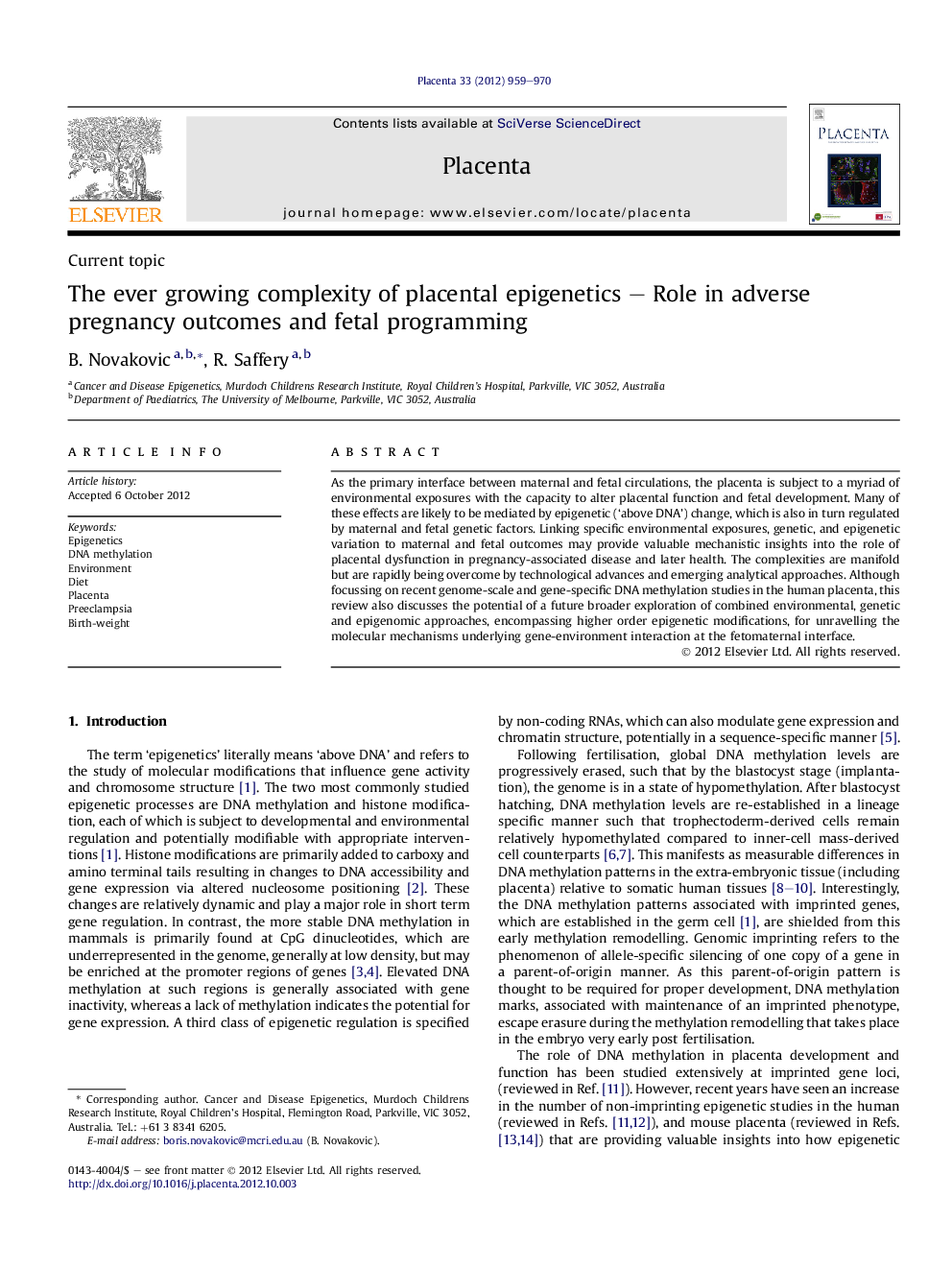| Article ID | Journal | Published Year | Pages | File Type |
|---|---|---|---|---|
| 5895686 | Placenta | 2012 | 12 Pages |
Abstract
As the primary interface between maternal and fetal circulations, the placenta is subject to a myriad of environmental exposures with the capacity to alter placental function and fetal development. Many of these effects are likely to be mediated by epigenetic ('above DNA') change, which is also in turn regulated by maternal and fetal genetic factors. Linking specific environmental exposures, genetic, and epigenetic variation to maternal and fetal outcomes may provide valuable mechanistic insights into the role of placental dysfunction in pregnancy-associated disease and later health. The complexities are manifold but are rapidly being overcome by technological advances and emerging analytical approaches. Although focussing on recent genome-scale and gene-specific DNA methylation studies in the human placenta, this review also discusses the potential of a future broader exploration of combined environmental, genetic and epigenomic approaches, encompassing higher order epigenetic modifications, for unravelling the molecular mechanisms underlying gene-environment interaction at the fetomaternal interface.
Related Topics
Life Sciences
Biochemistry, Genetics and Molecular Biology
Developmental Biology
Authors
B. Novakovic, R. Saffery,
